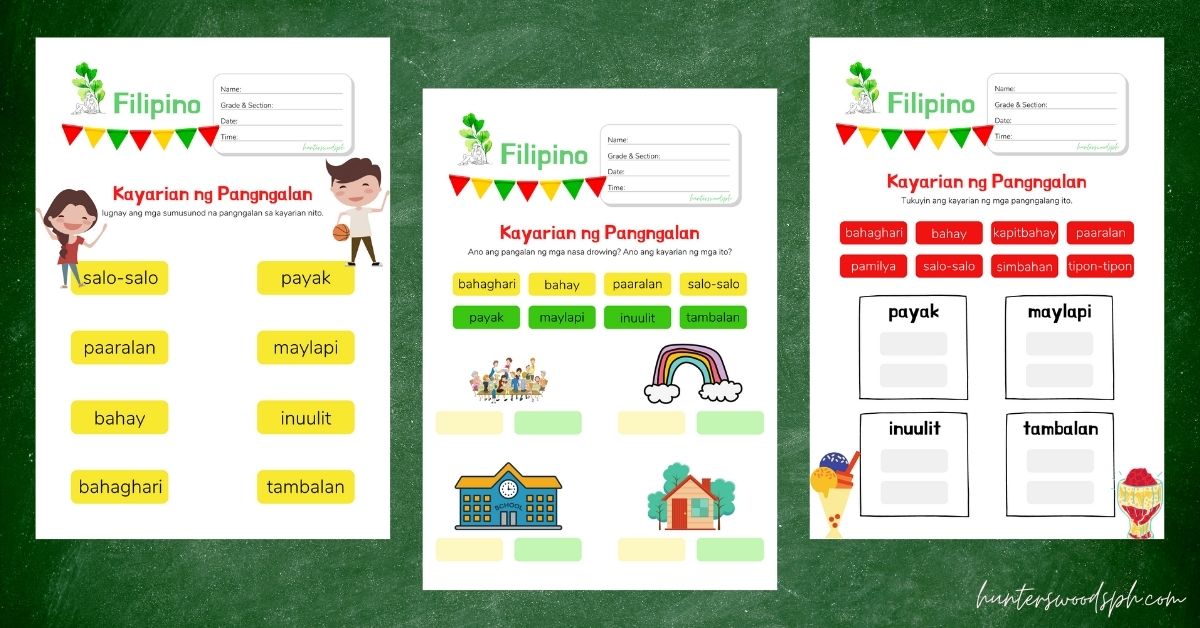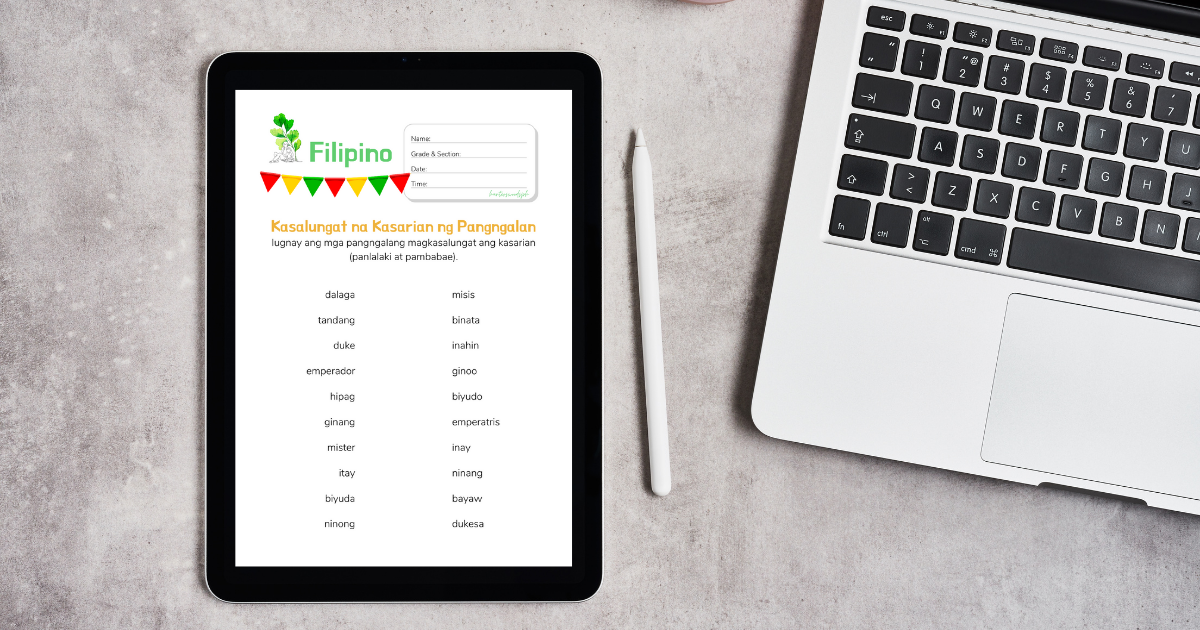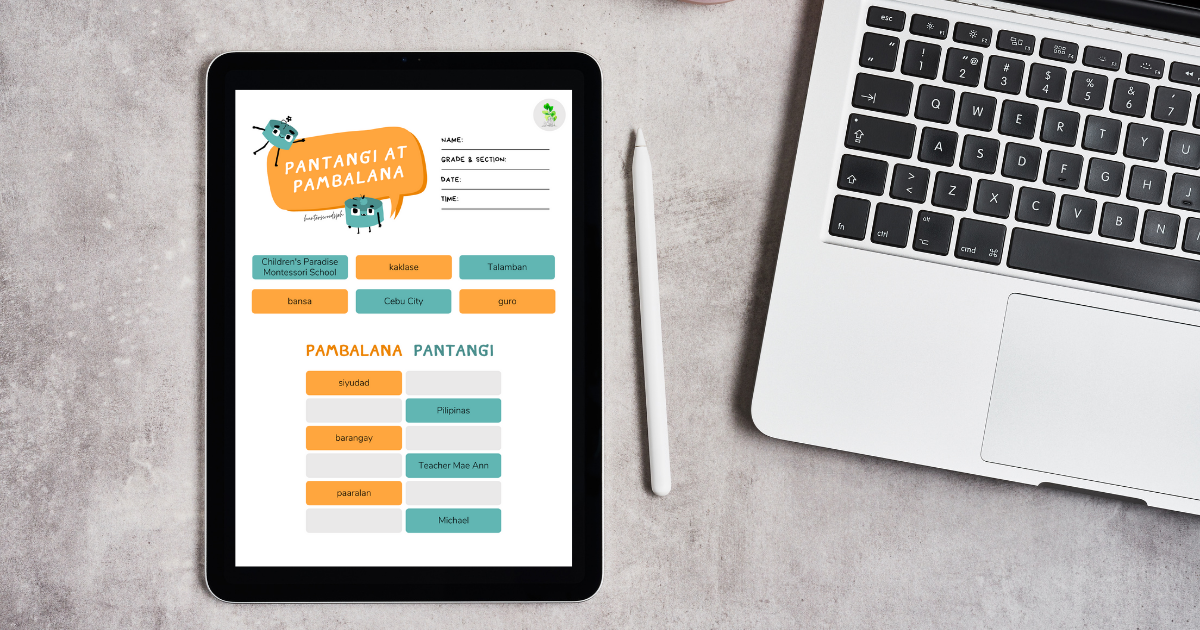Master the different Filipino/Tagalog pantukoy — si, sina, ang, ang mga — and learn how to use them in a sentence.
Tag: Montessori Filipino
Kayarian ng Pangngalan: Payak, Maylapi, Inuulit, Tambalan (Filipino Lesson and Worksheets)
Learn the types of Filipino nouns according to structure (kayarian ng pangngalan) and test your knowledge with our free worksheets for Kindergarten, Grade 1, Grade 2, and Grade 3.
Kailanan ng Pangngalan: Isahan, Dalawahan, Maramihan (Filipino Lesson, Quiz and Worksheets)
Nouns in Filipino can be isahan (singular), dalawahan (dual), or maramihan (plural). Here’s a quick lesson, quiz, and free worksheets on kailanan ng pangngalan.
Kasalungat na Kasarian ng Pangngalan: Pambabae at Panlalaki (Filipino Lesson and Worksheets)
Examples of kasalungat na kasarian ng pangngalan (opposite noun genders) and worksheets on matching and identifying corresponding pangngalang pambabae at panlalaki (feminine and masculine nouns).
Kasarian ng Pangngalan: Filipino Lesson and Worksheets for Kindergarten and Grade 1-3
A quick Filipino lesson and four worksheets on mga kasarian ng pangngalan for kindergarten, Grade 1, Grade 2, and Grade 3. Or write your own nouns in the bonus blank worksheet!
Mga Salitang Pareho ang Baybay Ngunit Iba ang Bigkas at Kahulugan: Filipino Lesson and Worksheet
An example list and worksheet of mga salitang pareho ang baybay ngunit iba ang bigkas at kahulugan (Filipino words that have the same spelling but different pronunciation and meaning).
Montessori Filipino Lesson and Worksheet: Pantangi at Pambalana
A quick definition of mga pangngalang pantangi at pambalana (proper and common nouns) and two interactive worksheets (sorting and giving examples) to help you master this Filipino lesson.
Montessori Filipino Lesson & Worksheet: Diptonggo at Klaster
A quick Filipino lesson and interactive worksheet on diptonggo at klaster
Montessori Filipino Lesson and Worksheets: Tamang Bigkas ng Mga Salita
A quick lesson and interactive worksheets on the correct pronunciation of Filipino words (tamang bigkas ng mga salita sa Filipino/Tagalog): malumay, malumi, mabilis, maragsa.
Montessori Filipino Worksheets: Patinig, Katinig, Pormasyon ng Pantig
Complete words using different patinig (vowels) and katinig (consonants). Identify the structure of a syllable (pantig): P, KP, PK, KPK, PKK, KKP, KKPK, KPKK, KKPKK, or KKPKKK.










